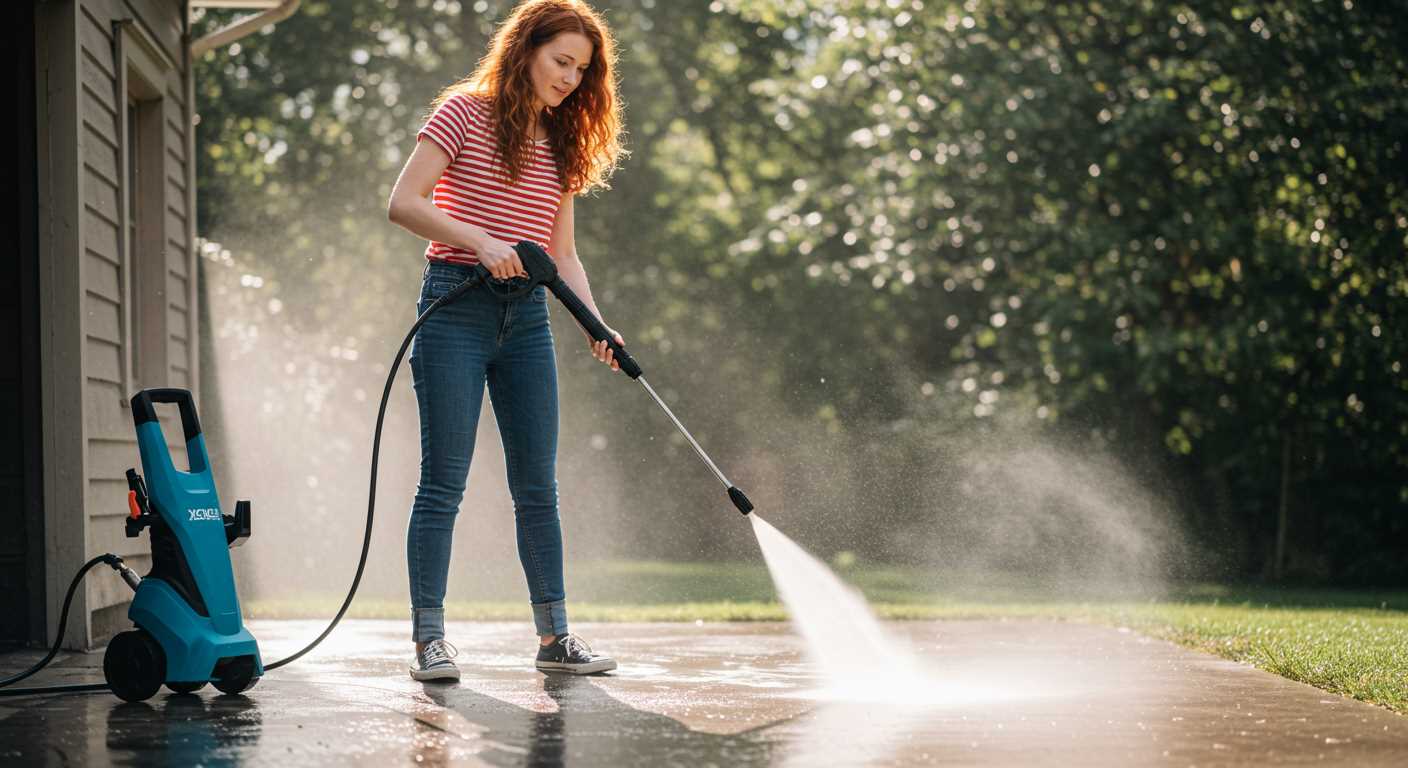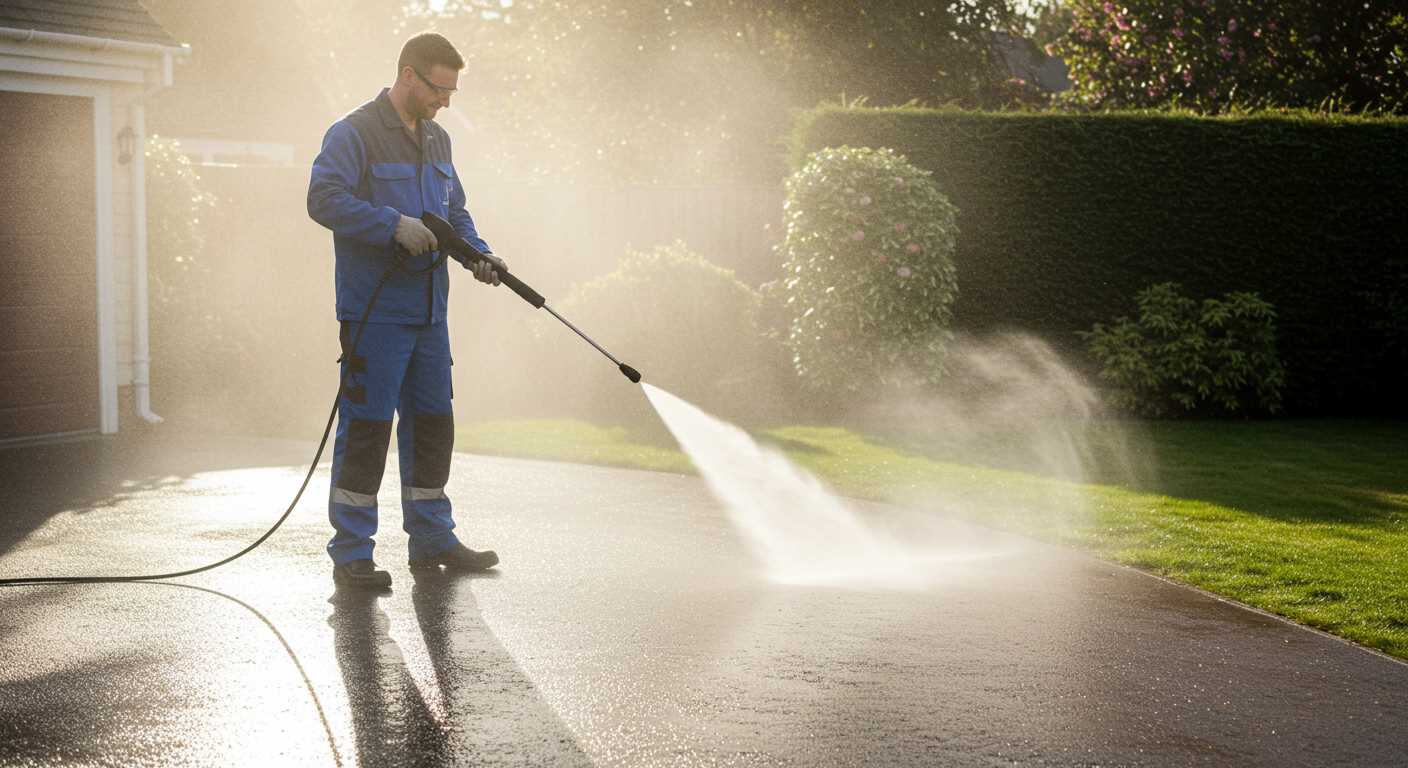

.jpg)
Regular maintenance is key. I recall a time when a colleague brought in their unit, barely a year old, claiming it had lost power. A quick inspection revealed a clogged filter, something easily overlooked. Routine checks can save you from bigger problems down the line.
Overheating is another frequent issue. During my tenure, I encountered numerous machines that had been left running without a break. These devices are not designed for continuous use without intervals. I recommend adhering to the manufacturer’s guidelines regarding operational time to ensure longevity.
Inadequate water supply can also lead to breakdowns. I’ve seen units struggle due to low water pressure or incorrect hose connections. Always ensure that your water source meets the required specifications before starting any task. It might seem trivial, but this simple step can prevent significant complications.
Lastly, using the wrong detergents can be detrimental. I once made the mistake of using a harsh chemical that damaged the seals in my device. Always opt for products recommended by the manufacturer. This small choice can greatly affect the performance and lifespan of your equipment.
Common mechanical issues leading to pressure washer breakdowns
Regular maintenance can prevent many issues, but certain mechanical problems often arise. One prevalent issue is the pump failure. I’ve seen this happen when operators neglect oil changes or use the wrong lubricant. Overheating can accelerate wear and tear. Always check the oil level and quality before each use.
Another common culprit is the unloader valve malfunction. This component regulates pressure, and if it gets stuck, it can cause the machine to either overpressurise or underperform. I recommend testing the unloader valve periodically and replacing it if you notice irregularities in pressure output.
Clogged filters are frequently overlooked. I once encountered a unit that struggled due to a blocked inlet filter. Debris can restrict water flow, leading to overheating. Clean or replace filters regularly, especially if you’re using the unit in dusty or dirty environments.
Hoses are often taken for granted, yet they can develop cracks or leaks over time. I had a client whose hose burst mid-job, creating a mess and wasting time. Inspect hoses for signs of wear and replace them at the first sign of damage to prevent unexpected disruptions.
Lastly, electrical issues can arise, particularly with older models. Corroded connections or damaged wiring can lead to starting problems. I recommend checking all electrical components periodically, ensuring connections are clean and secure. Keeping an eye on these common mechanical issues can significantly extend the lifespan of your equipment and improve its reliability.
Impact of Poor Maintenance on Performance
Regular upkeep is non-negotiable for optimal functionality. In my experience, neglecting maintenance not only diminishes efficiency but can lead to costly repairs. I encountered countless users who faced issues simply due to a lack of routine care. Keep these points in mind:
Common Consequences of Neglect
- Clogged Filters: Dirt and debris accumulation in filters can restrict water flow, causing machines to overheat. I once saw a unit rendered useless after a few months of operation due to a neglected filter.
- Worn Seals and O-Rings: Rubber components deteriorate over time, leading to leaks. A friend of mine lost significant pressure because of a small, unnoticed crack in a seal.
- Inadequate Lubrication: Lack of oil in pumps can cause severe damage. I recall a case where someone skipped this step; the pump seized completely, resulting in a hefty repair bill.
Maintenance Tips to Enhance Longevity
- Check and replace filters every few months to ensure uninterrupted operation.
- Inspect seals regularly and replace any that show signs of wear.
- Maintain proper lubrication levels in pumps and other moving parts to avoid friction damage.
- Winterise your equipment if not in use during colder months to prevent freeze damage.
In my decade of experience, the most reliable units were those that received consistent attention. Investing a little time in maintenance can save a lot of money and hassle down the line. Don’t overlook the basics; they often make all the difference.
How Incorrect Usage Can Cause Malfunction
Using your cleaning equipment incorrectly can lead to a range of issues that compromise its functionality. For instance, employing the wrong nozzle can result in insufficient cleaning or damage to surfaces. I recall a time when a customer used a narrow nozzle on a delicate wooden deck, leading to visible gouges and splintering. Always choose the appropriate nozzle for the job; it can save you from costly repairs or replacements.
Another common mistake is neglecting to maintain the correct water supply. Insufficient water flow can cause the motor to overheat. I once witnessed a unit burn out because it was connected to a garden hose with a kink. Ensure a steady and adequate water source is connected before starting any task.
Using the wrong cleaning agents can also wreak havoc. I had a client who opted for a harsh chemical that wasn’t meant for their equipment. The result? Clogged filters and damaged seals. Always refer to the manufacturer’s guidelines on compatible cleaning solutions, and consider using options like best vinyl siding cleaners for optimal results.
Incorrect technique plays a significant role as well. Holding the nozzle too close to the surface can lead to unnecessary wear. I remember demonstrating to a novice how to maintain the right distance while cleaning a driveway. The difference in effectiveness was astonishing, and it prevented damage to the concrete.
Lastly, ignoring the importance of starting and stopping procedures can lead to mechanical breakdowns. I once had to troubleshoot a machine that suffered from premature wear because the operator kept turning it off and on without allowing it to cool down. Following proper operating procedures is crucial for longevity.
Identifying and Resolving Electrical Problems in Pressure Cleaners
Check the power source first. I once encountered a unit that wouldn’t start, and it turned out the extension cord was damaged. Always inspect the cord for cuts or frays before plugging it in. A faulty power supply can lead to various issues, including inadequate performance.
Next, examine the on/off switch. A worn-out switch can cause intermittent operation. I had a colleague who replaced the switch in his cleaner, and it worked like new again. It’s a straightforward fix that can save you from unnecessary repairs.
Look for tripped circuit breakers. If the device keeps shutting off, this might be the culprit. Resetting the breaker can often resolve the problem, but if it trips again, there could be a deeper electrical fault needing attention.
Inspect the motor for any unusual sounds. A humming noise might indicate a jammed motor or an issue with the bearings. In one instance, I found a small stone lodged in the motor of a friend’s unit. Clearing it up restored full function.
Check the connections and wiring inside the unit. Loose or corroded connections can lead to performance issues. I remember a case where a simple tightening of a connection eliminated the problem. Make sure to disconnect the power before attempting this to avoid shock.
Lastly, if you’re unsure about any electrical components, consult a professional or refer to the manufacturer’s manual. Regular checks can prevent larger issues down the line. For instance, if you’re planning to use your cleaner for tasks like cleaning your garden furniture, ensuring everything is in top shape beforehand will yield the best results.
Choosing the Right Detergent to Prevent Equipment Damage
Always opt for a detergent specifically formulated for high-pressure cleaning equipment. Regular household cleaners can cause significant harm to internal components, leading to costly repairs. I once had a client who used a generic dish soap in their machine, thinking it would suffice. Within weeks, the seals deteriorated, resulting in leaks and extensive damage that required a complete overhaul.
Compatibility Matters
Check the manufacturer’s recommendations for compatible detergents. Using the wrong type can lead to foaming issues, which can clog filters and impede performance. I recall a situation where a contractor used a generic degreaser not meant for high-pressure systems. The foam buildup caused the pump to work overtime, eventually burning out the motor. If you want to avoid such headaches, always select products designed for your specific equipment.
Concentration and Application
Pay attention to concentration levels. Many detergents come in concentrated forms that require diluting. Failing to do so can result in residue buildup, negatively affecting performance. I’ve seen machines struggle to maintain pressure because the wrong dilution led to blockages in the nozzle. Always read the instructions carefully before application to ensure you’re using the correct dilution ratios.

.jpg)



.jpg)


